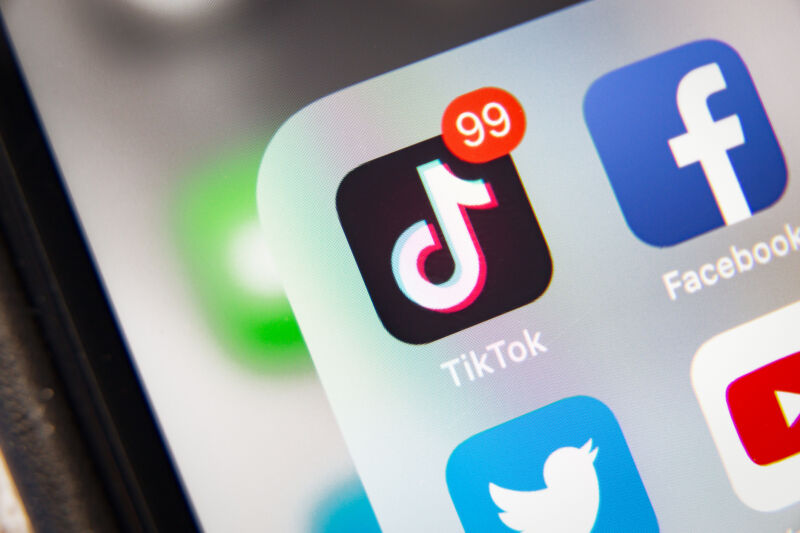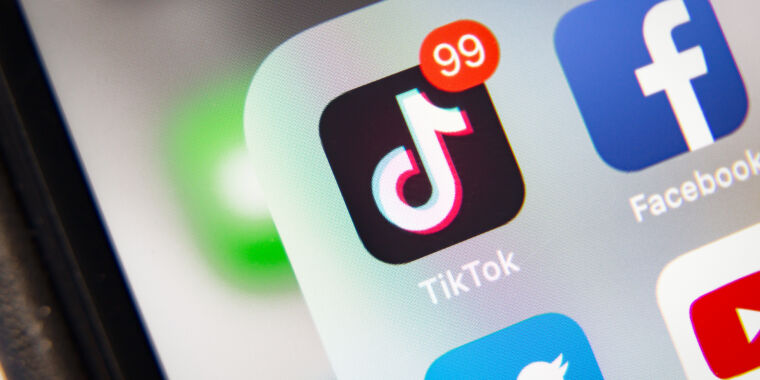
After the first child died from self-strangulation while attempting a recommended “Blackout Challenge,” there were many steps that TikTok could’ve taken to shield other kids from the same fate immediately. Instead, a new lawsuit filed in California says TikTok chose to continue profiting from promoting what’s now being described as its deadliest challenge, directly causing the deaths of six more children in 2021.
The lawsuit was filed by the parents of two of those children—girls ages 8 and 9. They claim their kids became addicted to TikTok, were fed a constant stream of seemingly harmless challenge videos persuading them to participate, and then died after attempting the Blackout Challenge. (The Blackout Challenge encourages TikTok users to post videos where they choke themselves until they pass out.)
Rather than blame creators of harmful videos or come after TikTok for publishing videos, the lawsuit instead seeks damages from TikTok for its product design that directed kids to videos.
In a statement, the parents’ legal team at the Social Media Victims Law Center (SMVLC) summarized the lengthy complaint: “The suit alleges that TikTok’s defective design of its social media product results in an addictive product that is not safe for users and fails to warn minors and their parents that TikTok is addictive and pushes harmful content onto their ‘For You’ page that could endanger their wellbeing.”
TikTok did not immediately respond to Ars’ request for comment, but a TikTok spokesperson told The New York Times that “the company would not comment on continuing litigation.” The spokesperson also linked to a prior company statement to People magazine about a 10-year-old girl who also died after attempting the Blackout Challenge. At that time, TikTok said that the “disturbing challenge” predated their platform and had never become “a TikTok trend.” Expressing “deepest sympathies” to the family affected in that case, TikTok vowed to “remain vigilant in our commitment to user safety” and “immediately remove related content if found.”
The lawsuit tells a different story, pointing out that “the ‘Blackout Challenge’ currently cannot be found on TikTok’s social media product,” which proves that the videos could’ve been removed after TikTok learned of the first death. Instead, the company chose not to take that or any earlier action to limit child exposure to the challenge, even though “the cost of incorporating age and identity verification into TikTok’s product would be negligible.”
Parents want TikTok to pay for addicting their kids, demanding a jury trial to decide whether TikTok’s design needs to change. Damages sought right now are unspecified but are expected to cover intangible losses suffered by the kids before they died, as well as the loss of each kid’s “future earning capacity” and “normal activities, pursuits, and pleasures.”
“TikTok needs to be held accountable for pushing deadly content to these two young girls,” said SMVLC attorney Matthew P. Bergman, who is part of the parents’ legal team. “TikTok has invested billions of dollars to intentionally design products that push dangerous content that it knows are dangerous and can result in the deaths of its users.”
What could TikTok have done?
Parents suing TikTok say it’s obvious when kids post videos of themselves that they’re too young for TikTok. The lawsuit claims that the platform knows that “hundreds of thousands of children as young as 6 years old are currently using its social media product,” but makes no attempt to terminate accounts for users under 12 because that would diminish their ad revenue.
“TikTok has information and knowledge that can determine with reasonably [sic] certainty each user’s age, habits, and other personal information, regardless of what information the user provides at the time of account setup,” the complaint states. “In other words, TikTok knows when a user claims to be 21 but is really 12.”
Keeping kids under 13 off TikTok isn’t the only option, though. The lawsuit claims there are many actions that TikTok could’ve taken to save lives after the first report from January 2021 of a child dying after attempting the “Blackout Challenge.”








